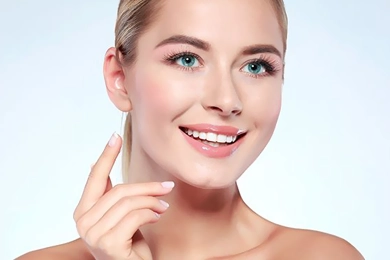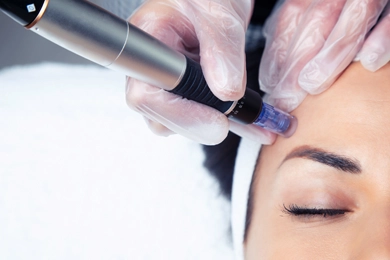
In the pursuit of vibrant, radiant skin, regenerative medicine has witnessed extraordinary progress. The use of autogenic fibroblast culture, also known as fibrocell therapy, to rejuvenate the epidermis is one such innovation.
By utilizing the power of your body's own stem cells, this novel method reverses the aging process of your epidermis. This exhaustive guide will provide an in-depth analysis of fibroblast therapy, including its definition, mechanism of action, advantages, and anticipated course of action.
Fibrocell therapy, alternatively referred to as autogenic fibroblast culture, is an innovative regenerative treatment that revitalizes and rejuvenates damaged or deteriorating skin using the patient's own skin cells. The primary emphasis is on fibroblasts, a cellular subtype that is accountable for the synthesis of collagen, elastin, and various other vital proteins that sustain the firmness, elasticity, and youthful aesthetic of the skin.
The fibroblast therapy procedure is a complex multi-step undertaking comprising the subsequent pivotal stages:
Consultation: Consultation with an accomplished dermatologist or aesthetic specialist initiates the process. You will discuss your skin concerns, expectations, and suitability for fibrocell therapy during this initial consultation. A provider will assess the condition of your epidermis and your overall health in order to determine whether or not this treatment is appropriate.
Biopsy: When a suitable candidate is identified, a minor skin biopsy is conducted. Generally performed inconspicuously, this procedure entails the delicate removal of a minuscule section of epidermis. Important cells required for the treatment, fibroblasts, are present in the epidermis sample that was collected.
Cell Culture: Fibroblasts are isolated and cultured in a specialized laboratory following the transport of the collected epidermis sample. By virtue of being your own fibroblasts, compatibility is ensured and the likelihood of adverse reactions is diminished.
Fibroblast Activation: After fibroblasts have been cultured to a sufficient quantity, they are stimulated and made ready for injection.
Injection: By stimulating the production of collagen and elastin in the targeted areas of the skin, the activated fibroblasts promote skin rejuvenation and a more youthful appearance.
Recovery and Results: At the injection sites, you may experience moderate discomfort, inflammation, or redness after the procedure. Nevertheless, these adverse effects generally diminish within a few days. As collagen and elastin levels increase over the subsequent weeks and months, skin texture, tone, and elasticity will progressively improve.
Autogenic Fibroblast Culture (Fibrocell) Therapy provides a variety of advantages for those in search of skin rejuvenation:
Natural Results Because your body's own cells are utilized in the treatment, the results are harmonized and appear natural with your facial features.
Minimal Risk of Allergic Reactions: Using your own fibroblasts reduces the likelihood of allergic reactions or rejection to an extremely low degree.
Improved Skin Texture: Collagen and elastin are generated in response to fibroblast activation; this results in skin that appears smoother, firmer, and more youthful.
Non-Surgical: Because fibroblast therapy does not require surgery, it appeals to individuals who favor non-invasive procedures that require minimal recovery time.
Long-Lasting Results: Autogenic Fibroblast Culture (Fibrocell) Therapy yields enduring results; consequently, ongoing maintenance treatments might be necessary to sustain the advantageous effects.
Fibroblast therapy is an appropriate intervention for patients seeking to treat the subsequent cutaneous conditions:
Seeking guidance from a certified medical professional is imperative in order to ascertain your suitability for Autogenic Fibroblast Culture (Fibrocell) Therapy and deliberate on your particular objectives regarding skin rejuvenation.
Autogenic Fibroblast Culture (Fibrocell)Therapy, alternatively referred to as autogenic fibroblastculture, signifies a promising new direction within the realm of skin rejuvenation. By utilizing the regenerative power of your own fibroblasts, this non-surgical treatment can provide you with natural, long-lasting results that include smoother, more youthful-looking skin. To regain your youthful appearance and revitalize your skin, it is advisable to seek guidance from a certified dermatologist or aesthetic specialist regarding Fibrocell therapy. By doing so, you can initiate the process of attaining radiant skin.
 Can Home Microneedling Be Performed?
Can Home Microneedling Be Performed?But is it possible to perform microneedling safely and effectively at home? And are there any possible negative effects of DIY methods? ...